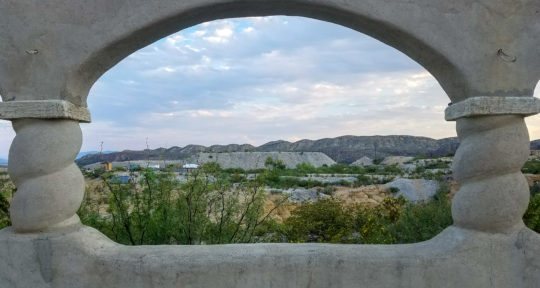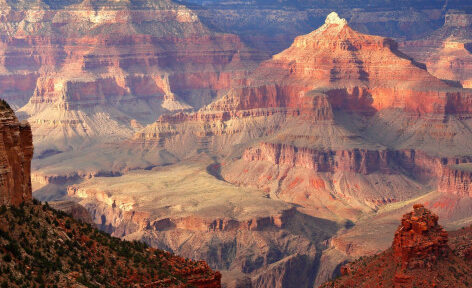Arizona is not typically the first place that comes to mind when searching for spectacular fall foliage. Yet, in the mountains surrounding Flagstaff, patches of aspen colonies put on a stunning show, displaying brilliant colors ranging from deep golds to electric yellows.
For the past two decades, I’ve been driving up to Snowbowl with my family in the fall to watch this spectacle of shimmering colors. This trip has become a seasonal pilgrimage for us, along with a challenge to find the perfect day to enjoy peak colors.
Aspens in Flagstaff wear their autumn colors for a few weeks every year, and the chance of missing the show altogether is slim. But the peak, when the trees display their most intense colors, might only last a few days.
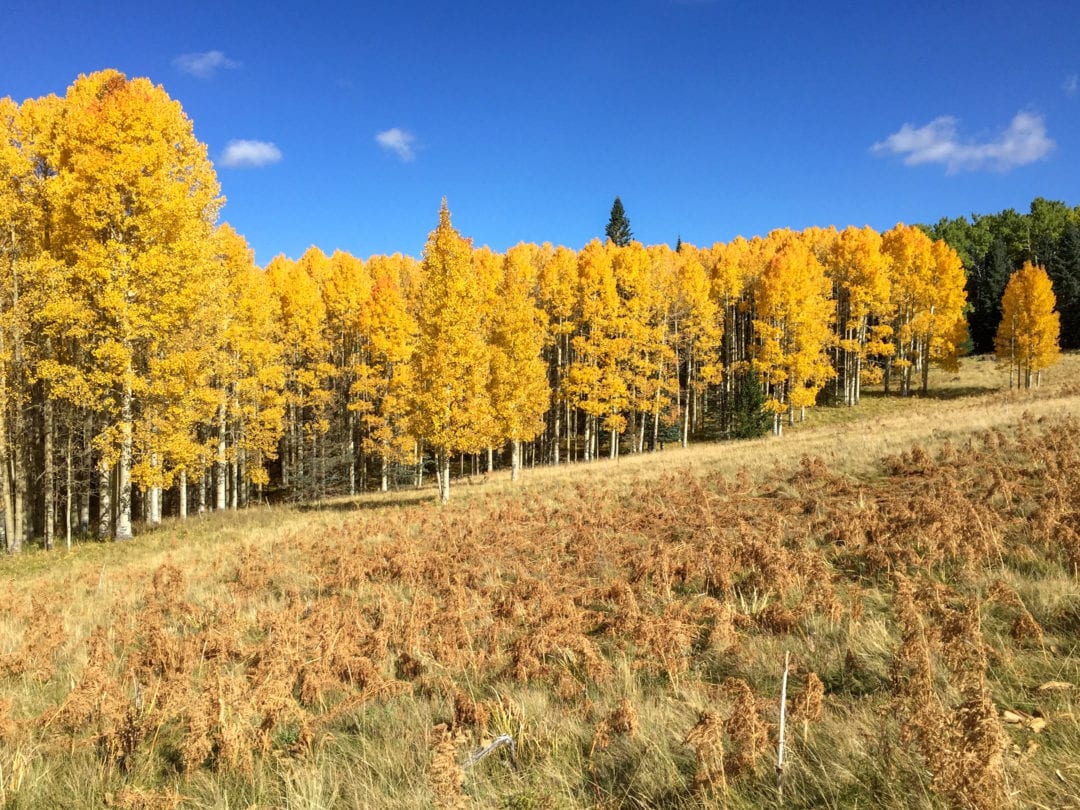
In search of answers
Curious about the varying degrees of color and brightness from year to year, I asked Professor Thomas E. Kolb from the School of Forestry of Northern Arizona University about what affects fall foliage.
“The timing of leaf color change is primarily driven by shortening day length, air temperature, and water availability,” he says. “Of these factors, temperature and water availability can vary from year to year, which causes variations in the timing of the color change.”
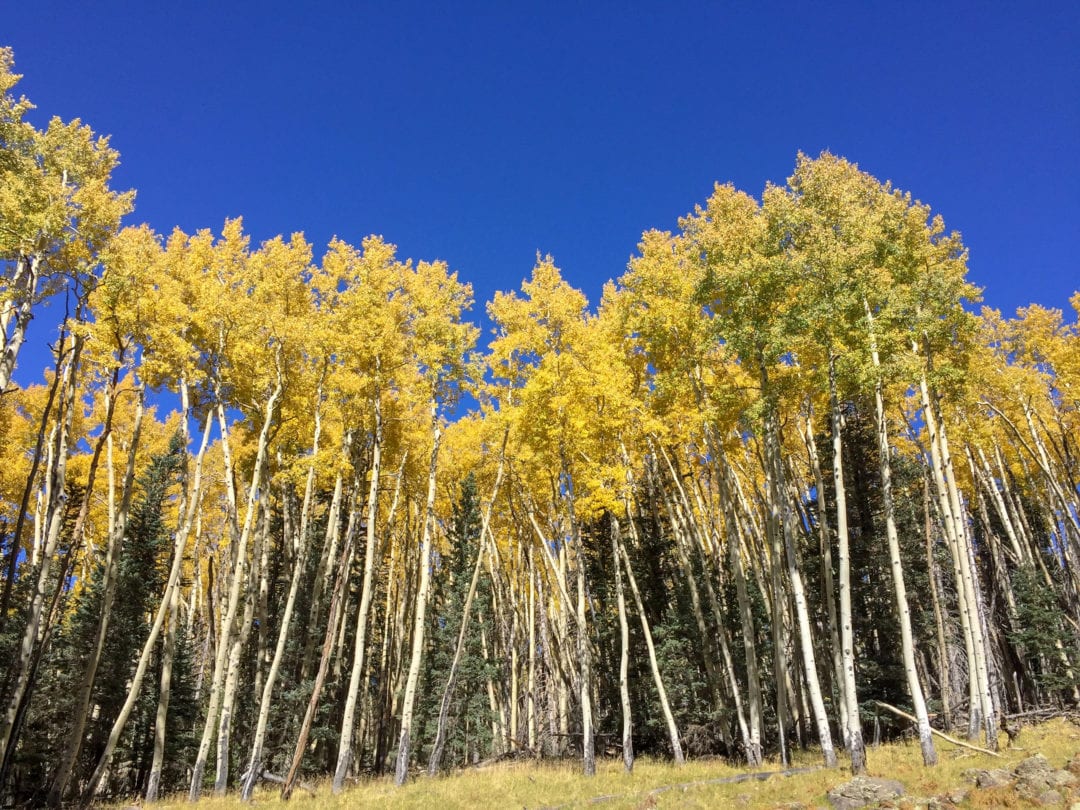
In general, he says, the color change is promoted by cool, but not freezing, temperatures. Cooler temperatures help break down the green chlorophyll pigments in the leaves and bring out other colors, including reds, yellows, and browns. “The characteristic colors of specific tree species, such as yellow aspens, or red maples, is due to differences in the amounts of the pigments and chemicals,” Professor Kolb says. “For example, aspens have more of the yellow pigments, maples have more of the red pigments.”
Other factors that trigger the color change are light and moderate drought. The most intense colors typically appear during falls with cooler (but not freezing) nights and clear, dry weather.
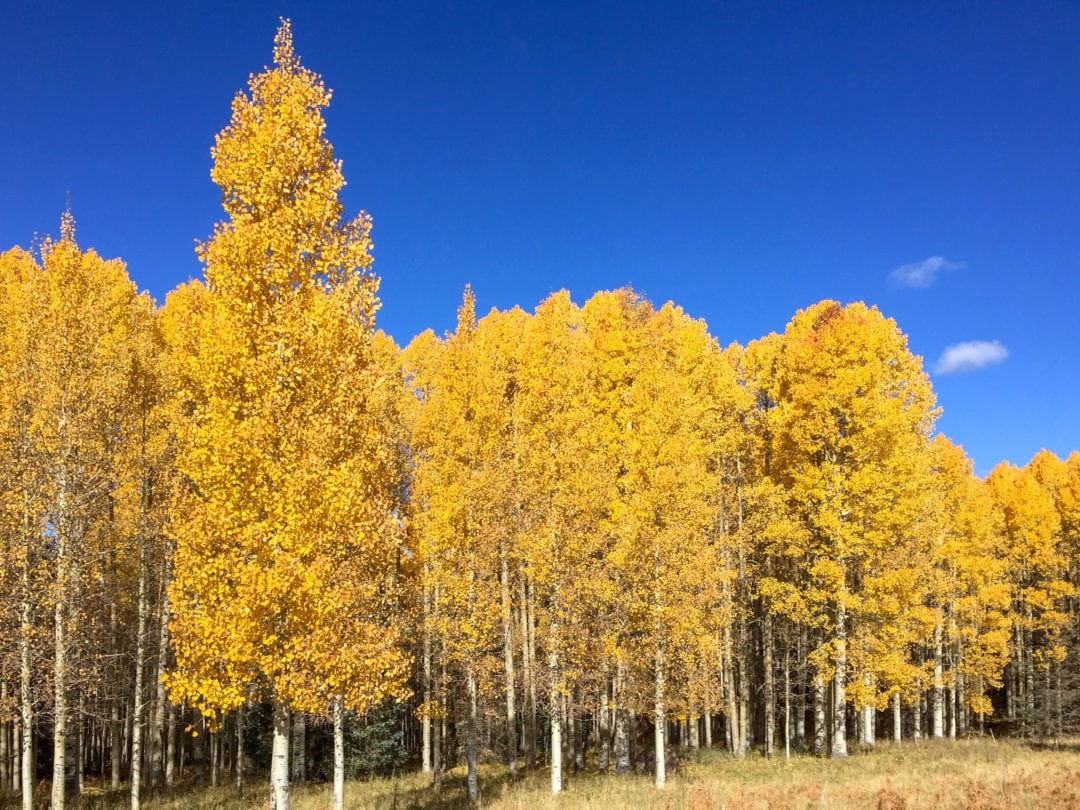
This means that the aspens in Flagstaff—where fall season tends to be dry and sunny with above-freezing temperatures—are set up for a spectacular display of colors. Even though they lose the quantity of light with fewer daylight hours, they still have bright, quality daylight helping them keep the yellow pigments.
Golden glory
We drive out of town on I-89, toward Williams and the Grand Canyon, to the west side of the San Francisco Peaks, also known as Kachina Peaks. Just past the Museum of Northern Arizona, we turn right onto Snowbowl Road. As the elevation gets higher, I notice patches of gold and pale yellow aspens lining the 7-mile road, woven through the deep green of the ponderosa pines.
Turning a bend, we land in a sea of gold as we reach the Aspen Corner and stop for a short walk. This dense aspen colony puts on a dazzling display right by the road—it’s one of the most visited sites on the mountain for a reason. We don’t need to walk far to experience a mix of neon-bright pale yellows and deep, brilliant golds.
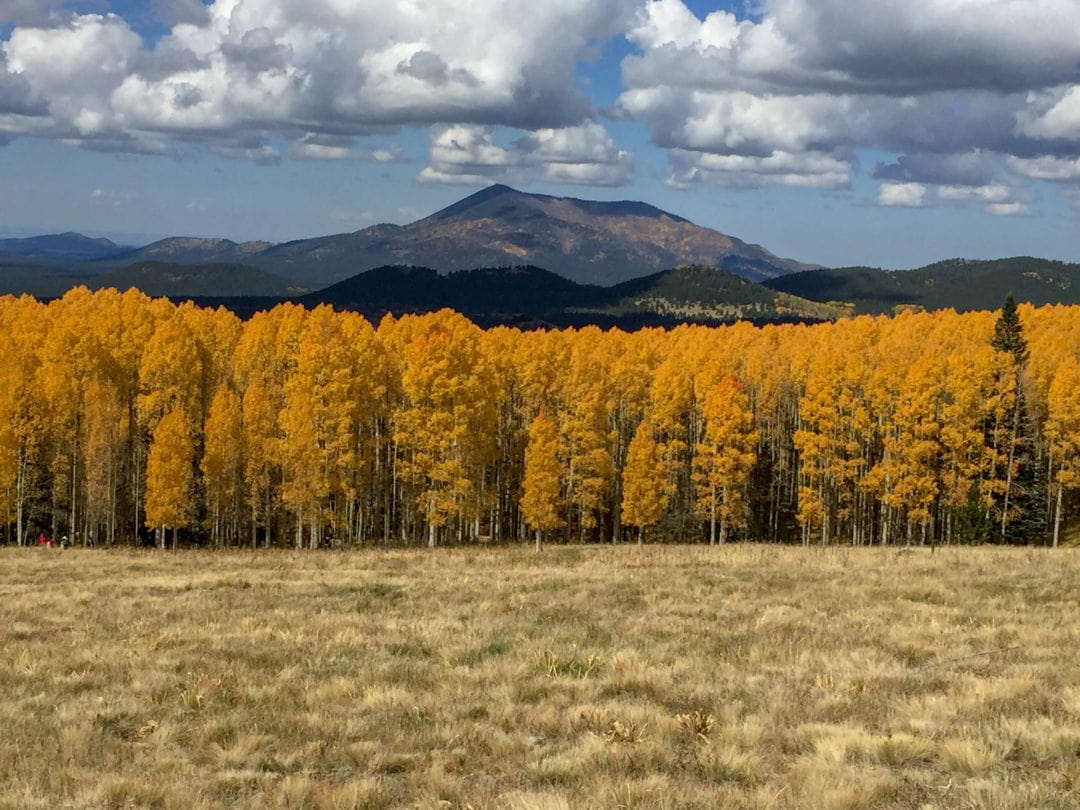
I could spend the whole day here, but we continue up the mountain to the Aspen Loop Trail, a pleasant, 1.8-mile hike suitable for hikers of every fitness level. The trail winds through vivid patches of aspens and an opening in the trees allows views of Kendricks, Sitgreaves, and Williams mountains, dressed in shades of green, orange, gold, and yellow. I stop here and enjoy the view, before continuing through another dense aspen grove.
Same tree, different color
The aspen colony across the meadow seems even more spectacular on this day, showcasing a brilliant golden hue. Some leaves are already on the ground. As I walk through the forest—red and brown beneath my feet, bright orange and yellow fluttering around me in the breeze—I think about the inconsistency in how the same trees, only a few feet from each other, change colors at a different pace.
Aspens grow in colonies, and those sharing a colony are clones, all growing from the same root system. I suspect that the two patches belong to different colonies, causing the discrepancy in the color change. Professor Kolb agrees: “Much of the variation in the timing of color change in aspens is due to variation among clones,” he says. “Genetic differences among clones apparently result in a slightly different timing in the reaction to the factors I mentioned. Also, there could be differences in microsite temperature that might be involved.”
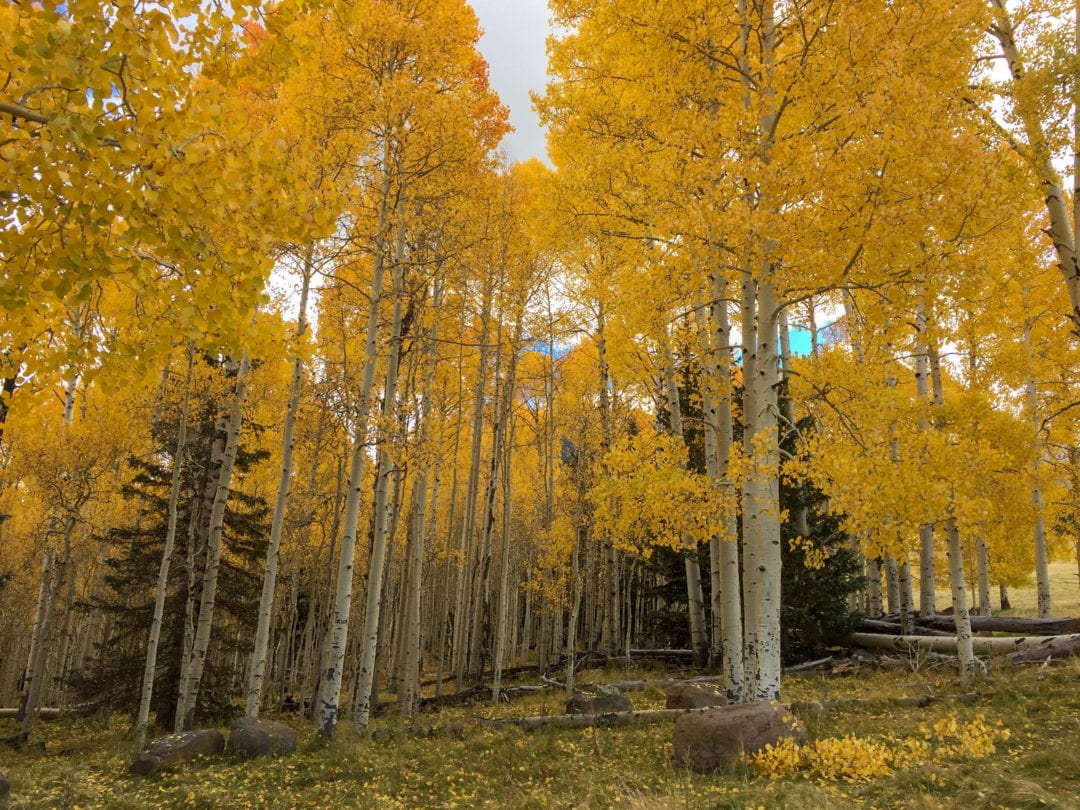
This year, according to the Coconino Forest Service, the leaves of Snowball will peak during the first and second week of October, as usual. Exact timing—and intensity of the colors—is still a bit of a mystery.
“This year will be interesting because the Flagstaff area had a wet winter and spring followed by a very dry late-summer monsoon. I am not sure yet what this scenario will do to the color change,” says Professor Kolb.
It is an unusual scenario, but no matter when the leaves peak, or for how long, there is sure to be a spectacular burst of color somewhere on the mountain, well worth the drive.

